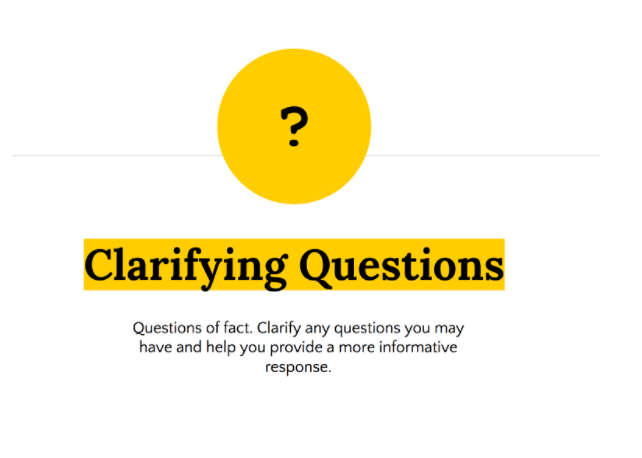

“What do you want to get out of this call today?” If you want to refocus a customer on a specific point without dismissing the rest of the information that they have provided you with, this is a polite probing question to reframe the conversation. Not all the information that customers give you will be relevant. “As you’ve just told me about, is there anything more you can tell me about it?” This will clear things up for you and make it simpler for the customer to articulate their problem. When customers fail to explain the issue clearly, help them out by asking for an example. “Just to make sure that I fully understand the problem, could you give me an example of what you mean by…?”
#Email clarify questions how to
To develop you agents’ active listening skills, read our article: How to Train Active Listening in the Call Centre – With Four Exercises 8. It is often the case that a customer will provide a really long response to your opening question, but you want to focus on the issue at hand.Īctive listening and probing questions (such as the one mentioned immediately above) will enable you to do that. Could you tell me a little bit more about that, please?” There may be reason in their logic, meaning that you can work together to problem-solve. If the customer has tried to fix the issue themselves, look more closely at this. “What difficulties did you run into when you tried to…?” “Have you tried to fix this yourself before contacting us?”īy getting to grips with the actions the customer has taken to resolve the issue, you can ensure that you are not passing on any advice that has previously failed. If you can better visualize the problem, you may be able to link it back to something you’ve previously come across for a faster resolution. You need to gain an understanding of the whole picture. You can also gain insight into how to solve the issue by asking the customer how they’ve dealt with the issue previously. Understanding this will tell you whether the problem is a one-off incident or systemic. You just need to be careful about how you frame it so you do not sound accusatory. It’s also key to find out whether the customer inadvertently created the issue themselves. “Just to make sure I’m not missing anything, can you please tell me what you were doing when the issue first began?” This will also give the agent greater insight into how long the customer has been suffering with the problem, which has the potential to influence their next steps. “When did this situation begin?”Įstablishing when the problem began is key to isolating the root cause. Want to improve your agents’ problem solving? Here are some probing question examples that can be used in customer service to help gather more information: 1. ☆☆☆☆☆ 16 Examples of Probing Questions in Customer Service To Find Out the Facts Behind the Situation


 0 kommentar(er)
0 kommentar(er)
